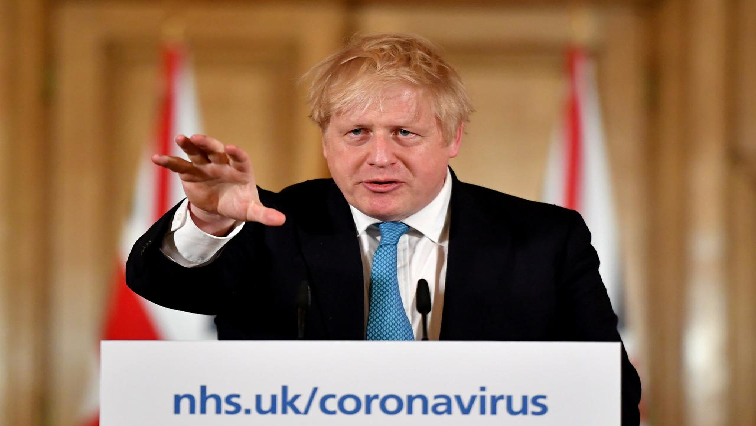British Prime Minister Boris Johnson’s condition has worsened since being hospitalised with persistent COVID-19 symptoms and he has been moved into intensive care, his Downing Street office said in a statement on Monday.
“Over the course of this afternoon, the condition of the Prime Minister has worsened and, on the advice of his medical team, he has been moved to the Intensive Care Unit at the hospital.
“The PM has asked Foreign Secretary Dominic Raab, who is the First Secretary of State, to deputise for him where necessary.”
Europe dares to consider easing lockdowns as US enters “peak death week”
European nations, including hard-hit Italy and Spain, have started looking ahead to easing coronavirus lockdowns after steady falls in fatality rates, as the United States prepared on Monday for what one official called “peak death week”.
In Spain and Italy, which account for over 40% of the world’s fatalities, the death rate has been declining for several days and public discussion has turned to how and when to ease weeks of drastic curbs on personal and economic activity.
Germany, seen by many as a guide for how to tackle the pandemic by combining restrictions on movement with widespread testing, drew up a detailed plan.
Yet the global figures remain stark, and show no sign of plateauing yet. A Reuters tally at 1400 GMT put the number of confirmed cases at 1.27 million – just three days after it crossed the 1 million mark – and deaths up by 17 000 over the same period to 70 395.
Confirmed US cases topped 336 000 on Sunday, making the United States by far the world leader, with deaths going over 10 000.
“It’s going to be the peak hospitalisation, peak ICU week and unfortunately, peak death week,” Admiral Brett Giroir, a physician and a member of the White House coronavirus task force, told ABC’s “Good Morning America” TV programme on Monday.
Roughly twice as many people a day are dying in the United States as in Spain or Italy, and hospitals report chaotic shortages of beds, ventilators and protective gear.
While New York City accounts for almost a third of US coronavirus deaths, more than 90% of Americans are under stay-at-home orders.
New York City Mayor Bill de Blasio said that a shortage of medical professionals was replacing a lack of equipment as the city’s primary need, calling for an additional 45 000 clinical personnel for April.
“Light at the end of the tunnel”
A University of Washington model, one of several cited by US and some state officials, projected that the peak need for hospital beds would come on April 15, and that daily deaths would peak, at 3 130, on April 16.
President Donald Trump, whom critics have accused of playing down the epidemic and trying to rush an end to the devastating economic paralysis, for his part on Monday repeated a message he had expressed at the weekend, tweeting “LIGHT AT THE END OF THE TUNNEL!”
In Britain, Johnson tweeted: “I’m in good spirits and keeping in touch with my team, as we work together to fight this virus and keep everyone safe.”
The British government reported 439 deaths in the 24 hours to Sunday evening, the lowest daily toll since March 31.
On Sunday, Neil Ferguson, a professor at Imperial College in London who has helped shape the government’s response, said he expected Britain’s epidemic to plateau in seven to 10 days.
“What’s critically important then is how quickly case numbers go down: do we see a long flat peak or do we, as we hope, see a much faster decline, and that really depends on how effective the current measures are,” he told the BBC.
Spain saw its daily deaths fall from Thursday’s peak of 950 to 637 on Monday, for a total of more than 13 000 deaths; Italy on Sunday reported 525 deaths, its lowest daily death toll in more than two weeks, for a total of more than 16 000.
As the numbers have flattened in Italy, there has been increasing discussion about rolling back a lockdown that has closed most businesses and slammed the brakes on an already fragile economy.
Prime Minister Pedro Sanchez said at the weekend that Spain’s lockdown would remain in place until April 26, but opened the door to easing some restrictions, such as keeping all non-essential workers at home, after Easter, which falls this Sunday.
When to ease up?
Central to most countries’ planning is the need to “flatten the curve” to avoid exhausting their supply of intensive care beds; significantly, Italy reported that the number of patients in intensive care had fallen for the second day running.
Austria said on Monday that it was turning a corner and would start reopening shops from next week, although it widened a requirement to wear face masks.
Measures to prevent a new upsurge in cases, such as masks, testing for infection and contact tracing, will also be crucial to most countries’ ability to relax their lockdowns.
Once more, the blueprint may come from Germany, which, despite being Europe’s most populous country, has recorded only 1 448 deaths from 98 000 confirmed cases.
A draft action plan compiled by the Interior Ministry and seen by Reuters says it should be possible to keep the average number of people infected below one per person – the measure of an epidemic in retreat – even as public life and economic life are gradually allowed to resume.
Germany, with Europe’s largest economy, has been under lockdown, with restaurants and most shops closed, since March 22 – and the document assumes the pandemic will last until 2021.
But the plan says the measures foreseen, including mandatory mask-wearing in public, limits on gatherings, the rapid tracing of infection chains and selective quarantining, should allow a phased return to something approaching normal life.
Germany’s lockdown is due to end on April 19, but the government declined to confirm that it was on track to do so.
“Even if some people are demanding it, the government can’t yet give an exit day, a firm date from which everything will be different and the measures relaxed,” a spokesman said.






